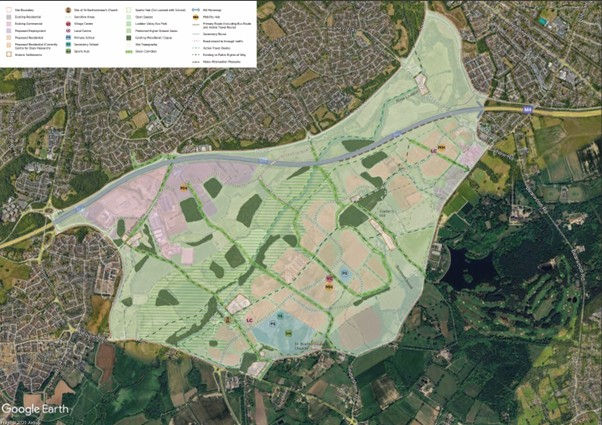Sustainable Transport and the Local Plan Update
- paulstevens24

- Feb 23, 2023
- 2 min read
Updated: Feb 24, 2023
Let’s look at some facts related to Reading University’s proposal to build 4,500 dwellings on the countryside around Hall Farm.
• 4,500 houses is around 10,000 cars at current car ownership figures for Wokingham.**
**(according to WBC’s planning committee car ownership is between 2.2 & 2.3 cars per house)
• Hall Farm has no public transport links and no roads bigger than a single track lane.
• The roads around the Hall Farm area are mostly small, winding country roads.
• The wider Hall Farm area already suffers hugely from traffic congestion.
• This is already one of the most highly polluted areas in the UK.
• Many people trying to use buses struggle with infrequent or cancelled services.
• Traffic in the South East is forecast to increase by 23% between now and 2050
Here is an interactive map which shows some of the major pollutants released from motor vehicles in the wider Berkshire area: https://www.getreading.co.uk/news/reading-berkshire-news/interactive-map-shows-berkshire-areas-26280902
Bracknell, Reading, Slough, Windsor and Wokingham have reported a high annual mean for carbon monoxide. This is most likely due to their proximity to London, particularly Heathrow Airport, while the M4 and other main roads also contribute significantly.
PM2.5 refers to the smallest particle matter measured as a contributor to air pollution. Charity Asthma and Lung UK said that PM can be made up of a mix of solids and liquids such as carbon, sulphates, nitrates, and mineral dust like soot and smoke. It can come from industry, burning fossil fuels, and from brakes and tyres. Areas around Reading, Slough and Bracknell were found to have higher levels than the majority of Berkshire, similar levels in fact to the centre of London.
80% of roadside nitrogen dioxide air pollution comes from road transport. The increase in road traffic over recent decades not only impacts the air quality of our towns and cities but also has wider effects such as noise pollution, lack of physical activity, access issues and road traffic collisions.
Why does Reading University think that our area can cope with a huge increase in all these risk factors?
Why do our council insist on keeping the hall farm proposal in the local plan, yet fail to state how they would effectively mitigate the serious impact of these risk factors?
Have your say
Wokingham Borough Council are keen to get your views on transport and travel around the Borough and their current consultation is open until the 12th March: https://engage.wokingham.gov.uk/en-GB/projects/a-new-local-transport-plan-for-wokingham-borough There are no easy answers to the problems raised by trying to make our transport systems more sustainable, but the consultation offers you the chance to have your say.
FYI the last WBC survey in 2022 on road plans got roughly twice as many comments in total than any previous consultation indeed more comments than the two previous surveys combined.
A final thought
• In 2013 a Coroner ruled that air pollution (mostly due to road traffic) made a “material contribution” to the death of nine-year old Ella Kissi-Debrah. This was the first time in the UK that air pollution has been listed as a cause of death.
• shouldn’t we be doing our best to ensure it’s also the last time?






Don't forget the other 39,999 early dealths each year due to pollution ( https://www.bbc.co.uk/news/health-35629034 )
See https://www.mumsforlungs.org/our-campaigns/wood-burning for some further sources of information about PM2.5's